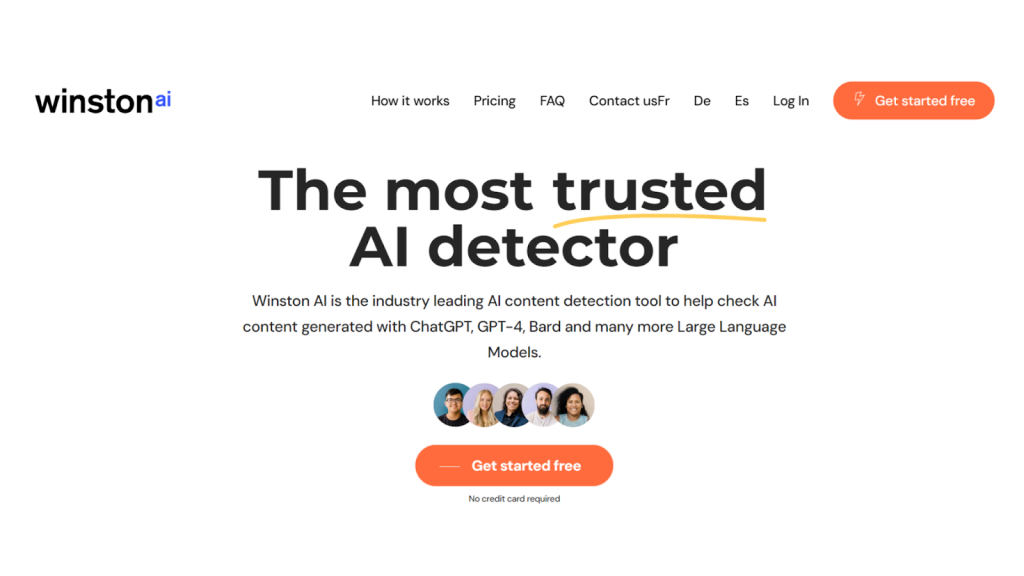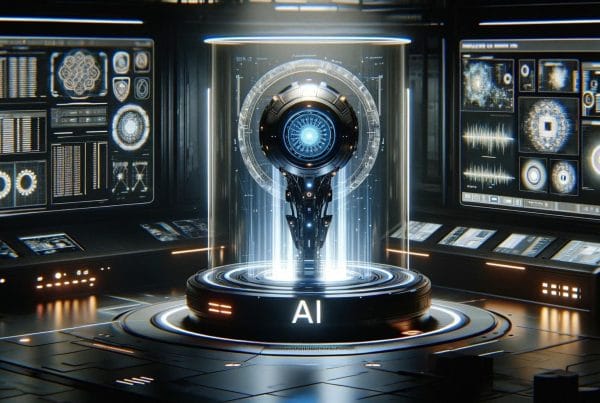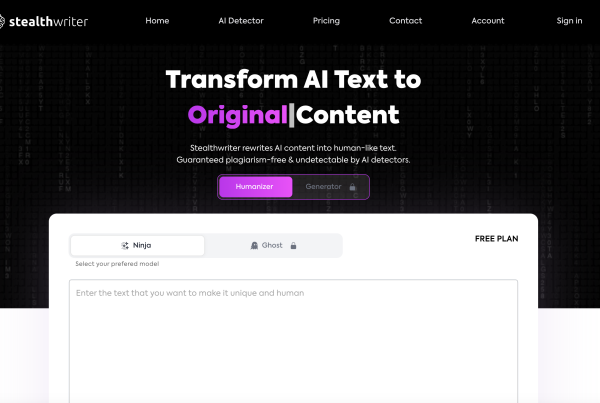You may have been worried about your University/School/Boss and how they will react to the fact that you used AI to help you with your work.
According to this study, 75% of workplaces are either banning or considering banning AI tools like ChatGPT in the workplace.
Many institutions and workspaces are using AI detectors like Winston AI to detect if people are using AI to do their work for them.
You can try out Winston AI for free here
It depends on the AI detector
Whether or not you can bypass an AI detector depends on the AI detector you use and the AI tool that you use.
There are many AI detectors that you can find for free but the accuracy rate is not very good as they don’t have an advanced algorithm or a large set of training data.
There is also the problem of AI tools being launched and updated regularly. An AI detection tool needs to be kept up-to-date with the latest models which a free detection tool just couldn’t sustain.
Our tool Winston AI has an accuracy rate of 99.98% when detecting AI content.
You can’t really beat that for accuracy.

Best AI Detectors Right Now
Obviously, we are biased but we believe Winston AI is the best, most accurate AI content detector on the market.
Some of the features that we have include:
- An app where you can scan texts for AI or plagiarism
- An AI detection map that allows you to see what text our tool thinks was written by AI
- A chrome extension so that you can check text around the web
- Reports of your scans so you can easily share them with relevant parties
Some other AI detection tools that are popular are Orginality AI which is marketed to web publishers and Turnitin which is for educational institutions. You can also read more about a tool called GPTZero in our review here.
So, you might be wondering how people try to bypass AI content detectors. Most people are attempting to “humanize” AI output.
Let’s dive deeper into this idea.
What is Humanizing Content? (And Does it Work?)
Humanizing content is the idea of using a prompt to change the syntax (word order) and language so that the text passes AI content detectors.
There are two ways of doing this: using a specific prompt to write or edit your content in a way that is more similar to a human, or using an AI tool to change the order of the words.
Prompt engineering is the skill of writing prompts (instructions) for an AI tool. Most people think prompt engineering will be a big job in the future and I tend to agree. The people who can instruct the AI tool well can get substantially better output.
Here is an example prompt:
Don’t always use the most natural words. Use the following words fewer than 3 times on this page: unique, ensure, utmost. Before outputting the content, review it for the following words and rewrite those sentences with appropriate alternatives: meticulous, meticulously, navigating, complexities, realm, bespoke, tailored, towards, underpins, everchanging, ever-evolving, the world of, not only, seeking more than just, designed to enhance, it’s not merely, our suite, it is advisable, daunting, in the heart of, when it comes to, in the realm of, amongst unlock the secrets, unveil the secrets, and robust.
As you can see, this prompt attempts to reduce the repetition of generic phrases (Pro Tip: AI tools tend to respond better to positive instructions “Do this” rather than being told what “not to do”)
This ability to prompt well really is the “writing” of the future and we all need to learn this to become better writers.
The second way to humanize writing is to use a “humanizer” tool to restructure your text. I have tested all of the humanizers on the market and they are a waste of time. Sometimes they work at getting lower AI detection scores but at the cost of drastically lowering the quality of the writing.
Here are some reviews if you want to read more:
What do Open AI and Google have to say about AI content?
Open AI and Google are two of the most important players in the AI space. Open AI created ChatGPT which is the most popular AI writing tool and Google have created Gemini a similar product.
Open AI have actually attempted to build an AI content detector but failed miserably and they had to pull it. They don’t seem that interested in determining whether AI-created text is AI or not however they have been a bit more reticent in releasing their video AI tool Sora as the implications of fake AI video content may be more serious.
Google, on the other hand, is adding AI to all of its products. They have Search Generative Experience (SGE) which gives you AI generated answers in Google Search, Google Gemini in its Workspace apps such as Google Docs and even YouTube has announced that they are adding AI into their tools.
So Can you really Bypass AI content detectors?
The answer to this question really depends on a variety of factors including but not limited to:
- The AI content detector
- The AI tool that generated the text
- The prompt (instructions) given to the AI tool
From my attempts to bypass various AI content detectors, I have been able to trick the detector into giving a human result simply by giving a prompt to write in quirky language.
However, I have tested Winston AI 100’s of times and I have never been able to bypass the AI detector. I can confidently say it is the best AI detector I have tried.
You can test the Winston AI detector for free here.



